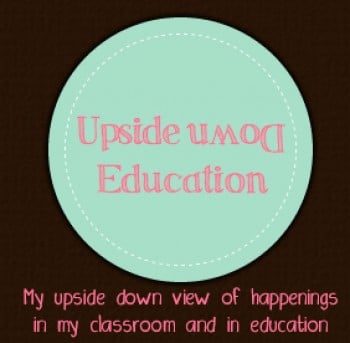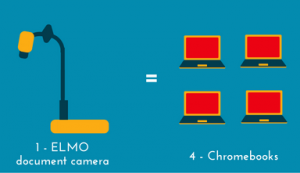I just left #ISTE17. If you have ever been, you know it is an overwhelming, if you haven’t then just trust me, it is. The crowds (20,000 educators this year!), the expo hall, the sessions, and the wonderful people, all take a lot out of you. In the past I have posted about all the new technology tools found in the expo hall, in 2010 about how ridiculous it is unless you change your thinking and the learning in your classroom and last year posted about how we have some of the most powerful tech that can change the lives of students today and we need to use them.
When walking through the expo hall we need to not get sucked into the pretty but look for ways these tools will benefit our students. I love this tweet from Will Richardson saying these are the two questions to ask when we talk to vendors on the expo floor.
My annual challenge to all #iste17 #iste2017 folks when you’re on the vendor floor. Ask these questions. Post responses to #iste17learning pic.twitter.com/cKDxjqXbTp
— Will Richardson (@willrich45) June 24, 2017
Awesome, right? But I think we don’t need to only ask when we are on talking to vendors or buying certain technology. I think we need to ask this every time we spend money in a classroom. I read these statistics last year before school started on the amount of their own money teachers spend for their classroom and supplies every year. An average of $500. While I do not doubt that a lot of it is for crayons, pencils, etc, I am curious what exactly they are buying. I remember back to school was so expensive, then one year I realized I was spending it all on bulletin board border and decorations. While I wanted my room to look good, that was a little much and started stepping back over the years. I started asking myself if I was spending it for me or for my students. I started putting that money away and eventually bought another laptop for my classroom. Same with the money in my classroom account, I ended up with 7 laptops when I left the classroom. Four of which were bought with the money I saved.
In the business world there is a term called ROI, return on investment. For some reason cost effectiveness and ROI are not really pushed in the education world. But if you ask those questions from Will Richardson’s tweet before you buy or buy more of something you might have a different outlook. Some things that cost a lot might be worth it while others, not so much. I made this chart for my schools a little over a year ago for them to compare the costs of items they are buying. I hoped it would stop buying things that were expensive and only used by the teacher buy tech that can be put into more teacher’s hands. I later made this chart to show this visually.
But let’s look at this more closely. On the chart I started with $1000, the price many schools pay for a good quality document camera. Who usually uses it? The teacher, usually when giving notes, heck when I see them, it is usually for kids to copy a worksheet so they don’t have to make copies. For that same price, a teacher could get 5 Dash and Dot robotics kits or 4 Chromebooks. How would you rather teach math, using coding and spacial ideas with a robot or copying problems off the ELMO? The top complaints when I do tech PD with teachers is “I don’t have enough tech” or “I don’t enough money for tech.” But the school buys them ELMOs? I don’t understand.
Here is one more, for the cost of 1 interactive TV with stand (we use 2 different brands, the ViewSonic is around $2800 and Promethean is $3400), you could buy 14 Chromebooks or 2 3D printers, 2 laptops, and 2 Chromebooks or 3 TVs each with a Chromebox and wireless keyboard/mouse combo. While the TVs aren’t going to have students working on them like the others, you are servicing more teachers. How many teachers actually use the board interactively with students and how many use them as a $3000 projector. The cool of it isn’t worth the money if not used by students.
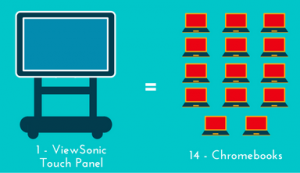
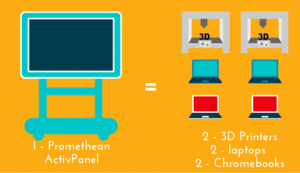
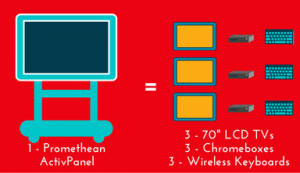
The point of all of this is that before we get sucked into the cool or pretty we need to ask ourselves if the products we are buying are actually being used by the kids for creating or if they are using it to just test. Is the item being used at all? That is a big question. If you get bored, go to Pinterest and search “classroom decorations” and see how much money is put into “learning space design” that is really just “Pinterest pretty.” We have too look at the ROI because when it comes down to it, our investment should be 100% student learning, everything else is just noise.
